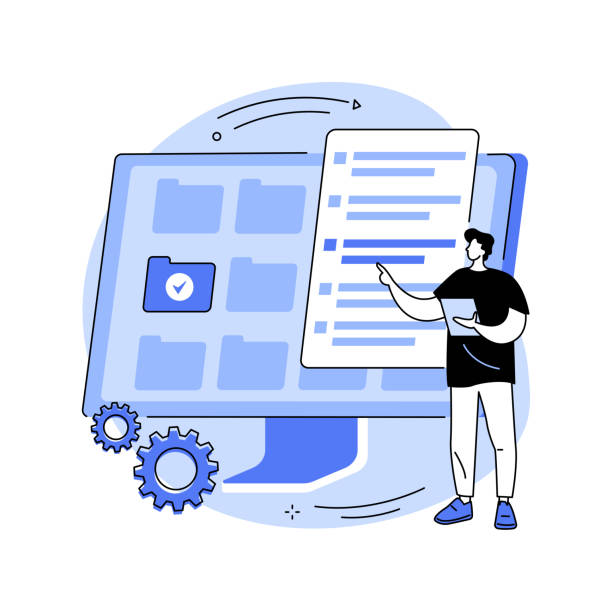1. The Importance of Multilingual Website Design in the Age of Globalization
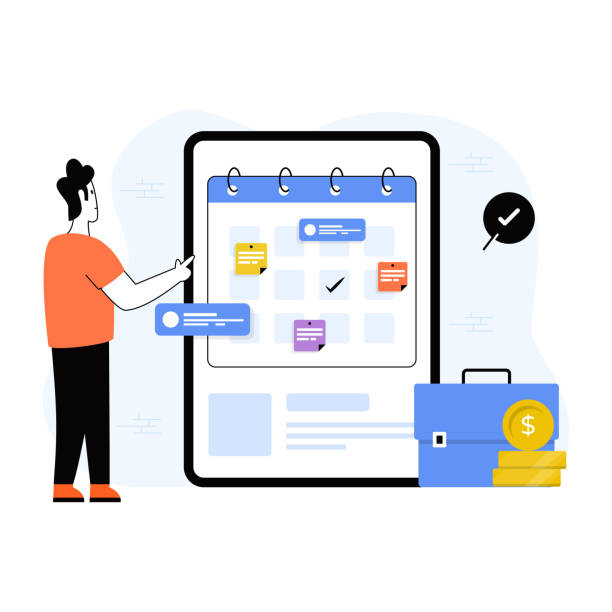
In today’s world, where geographical borders are fading and the #internet has become a bridge between different cultures and languages, having a website solely in Persian is no longer sufficient.
#Multilingual_website_design is not only a competitive advantage but also a necessity for any business that dreams of #international_expansion and attracting global audiences.
This approach is, in fact, a gateway to new markets and unparalleled opportunities for growth and development.
When a user from another country accesses your website in their native language, they will feel a greater sense of closeness and trust.
This strong connection plays a pivotal role in converting visitors into loyal customers.
Why should we consider multilingual website design? Is simply translating content enough? The answer is no.
The issue goes beyond a simple translation; it means providing a comprehensive user experience tailored to the culture and language of the target audience.
Many businesses lose the enormous potential of international markets due to language barriers.
For example, how can a manufacturing company with only a Persian website reach its potential customers in Europe or Latin America? Monolingual websites often create many limitations in attracting organic traffic from search engines in other countries.
Investing in multilingual website design not only increases your brand’s global visibility but also enhances your business’s credibility and professionalism.
In a world where access to information happens in a fraction of a second, users expect to receive content in a language that is most comfortable for them.
This is especially important in customer service and support.
Providing explanatory and educational content in multiple languages helps users better understand your products or services, thereby increasing your website’s conversion rate.
This approach is a fundamental step for success in the global arena and helps you outperform your competitors.
So, let’s talk more about the benefits of this strategy and how to implement it.
Is your current e-commerce website design not generating the expected sales for you?
Rasaweb is an expert in professional e-commerce website design!
✅ An attractive and user-friendly website aimed at increasing sales
✅ High speed and security for an ideal shopping experience⚡ Get a free online store design consultation with Rasaweb!
2. Competitive Advantages of Multilingual Websites

In today’s highly competitive digital space, having a multilingual website can be the difference between success and failure in international markets.
One of the biggest competitive advantages is increased access to new markets.
By providing content in various languages, you will be able to reach broader segments of the audience who would otherwise never visit your website.
This means a potential increase in traffic, leads, and ultimately, sales.
Monolingual websites limit themselves to a specific market, whereas multilingual website design breaks down these walls and paves the way for business expansion.
Another advantage is improved SEO and visibility in search engines.
When your content is provided in different languages, search engines like Google rank your website for relevant keywords in those languages.
This means your chances of appearing in search results for users in different countries significantly increase.
Correct use of multilingual SEO features, such as hreflang tags, helps search engines display the correct language version of your website to users in appropriate geographical regions, which is a specialized and vital advantage.
Furthermore, a multilingual website increases your brand’s trust and credibility.
When a company strives to speak to its customers in their own language, it shows respect for their culture and needs.
This respect leads to a stronger customer relationship and increased loyalty.
Conversion rates on multilingual websites are often higher because users feel more comfortable and understand the information more fully.
This can directly impact your business’s profitability.
An international website allows companies to be recognized as global players rather than just local ones, which is a very important competitive advantage in the age of globalization.
3. Challenges and Implementation Solutions in Multilingual Website Design

Multilingual website design, although offering countless benefits, also comes with its own challenges that require meticulous planning and correct execution.
One of the first and most important challenges is choosing the correct URL architecture: should we use subdomains (e.g., en.yourdomain.com), subfolders (yourdomain.com/en/), or top-level domains (yourdomain.com, yourdomain.de)? Each of these methods has its own advantages and disadvantages in terms of SEO, management, and hosting, and an incorrect choice can harm your efforts.
This is a specialized discussion that should be brought up with SEO consultants and web developers.
Another challenge is content management and its translation.
Simply translating words is not enough; content must be localized to match the culture, idioms, and even emotions of the target audience in each country.
This includes translating texts, images, videos, and even local units of measurement and currency.
Guidance and the use of native translators and specialists in your field are vital here.
Also, maintaining translated content and ensuring its up-to-dateness across all languages is a complex and ongoing process that requires robust Content Management Systems (CMS).
Table 1: Comparison of Content Translation Methods
| Translation Method | Advantages | Disadvantages | Suitable For |
|---|---|---|---|
| Human Translation | High accuracy, cultural localization, brand tone preservation | High cost, time-consuming | Sensitive content, marketing, legal |
| Machine Translation (MT) | High speed, low cost, scalability | Low accuracy, lack of localization, unnatural tone | Internal content, non-sensitive texts |
| Machine Translation Post-Editing (MTPE) | Combination of speed and accuracy, reduced cost compared to human | Requires expert editor, variable quality | Most website content, blogs |
Technical issues such as choosing the right platform, implementing language switchers, and ensuring the correct functioning of scripts in all languages are also among the challenges.
Compatibility with responsive design for right-to-left (RTL) and left-to-right (LTR) languages, as well as support for different fonts and encodings, are among the technical considerations.
Finally, multilingual SEO itself is a specialized field that we will delve into further in subsequent chapters.
Solving these challenges requires a comprehensive approach and close cooperation between different teams.
4. Choosing the Best Strategy for Content Translation
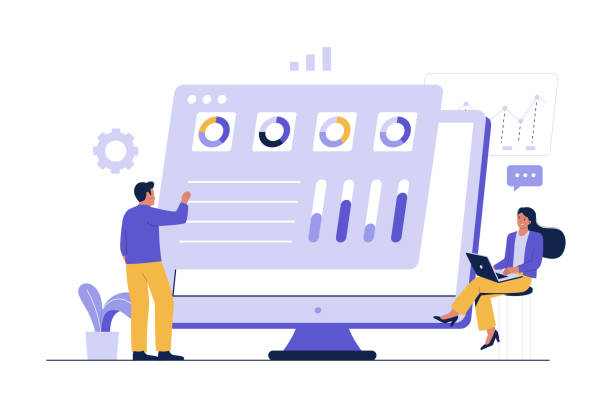
When designing a multilingual website, one of the most important decisions is choosing the appropriate strategy for content translation.
This decision not only affects the quality of your content but also directly relates to your budget, timeline, and ultimately, the success of your project.
There are three main approaches to content translation: human translation, pure machine translation, and machine translation with post-editing (MTPE).
Each of these methods has its own advantages and disadvantages that must be carefully considered to select the best option for your business needs.
Human translation offers the highest quality and accuracy.
In this method, professional native translators translate your content, considering cultural differences, local idioms, and your brand’s tone.
This method is ideal for sensitive content, legal texts, marketing materials, and any text that requires a deep cultural and emotional understanding.
Although this is the most costly and time-consuming option, the final result will be a highly localized and trustworthy website that can provide a seamless user experience.
This approach means producing specialized and high-quality content.
Pure machine translation (like Google Translate) is fast and inexpensive, but its accuracy and quality are lower.
This method is used for translating large volumes of non-sensitive content, such as user reviews, or for a general understanding of a text.
Using this method for core website content or any text that influences user decision-making is not recommended, as it can harm your brand’s credibility and lead to misunderstandings.
This is an educational approach to understanding the capabilities and limitations of AI.
Machine Translation Post-Editing (MTPE) is a hybrid approach where content is first translated by a machine translation system and then reviewed and edited by a human translator.
This method creates a balance between speed, cost, and quality.
For most website content, blogs, and news articles, MTPE can be a suitable option.
This method allows you to control costs while ensuring that the content is grammatically correct, fluent, and somewhat localized.
Choosing the right strategy for multilingual content is a vital step towards the success of your multilingual website design.
Are you bothered by losing customers who have visited your site to make a purchase?
Rasaweb is your specialized solution for having a successful online store.
✅ Significant increase in your online sales
✅ Building trust and professional branding with customers⚡ Get a free consultation from Rasaweb experts!
5. Multilingual SEO: Key Tips for Visibility
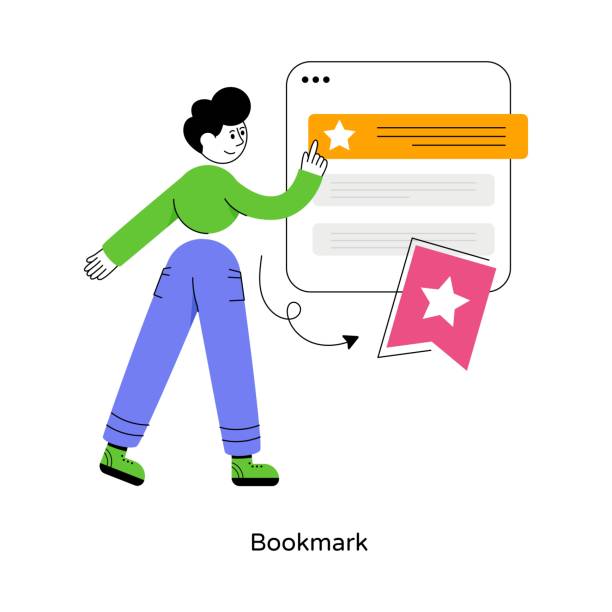
For your multilingual website design to be truly successful and attract global audiences, merely translating content is not enough; special attention must also be paid to optimizing the site for search engines (SEO) in each language.
Multilingual SEO is a specialized field that requires a deep understanding of how search engines operate in different regions and for various languages.
Common mistakes in this area can lead to your website not being visible in search results, even if you have excellent content.
One of the most important elements of multilingual SEO is the correct use of hreflang tags.
These tags help search engines like Google understand which version of a page is intended for which language and geographical region.
Incorrect use or omission of hreflang can lead to duplicate content issues and a decrease in SEO ranking.
Additionally, you must ensure that each language version has a unique URL (subfolder, subdomain, or dedicated domain).
This is a very important guideline.
Keyword research in each language is also crucial.
Keywords that are effective in one language might not have the same meaning or search volume in another.
You must conduct separate keyword research for each language and find phrases that local users actually use to search for your products or services.
This process often involves using native tools and understanding the search culture of that language.
This analytical approach is the cornerstone of multilingual SEO success.
Geo-targeting also plays an important role.
This means adjusting settings in Google Search Console to indicate your website’s geographical target audience.
Ensuring that your website’s hosting server is near your target audience and using Content Delivery Networks (CDNs) can also help improve loading speed and user experience, both of which are important factors in SEO ranking.
By observing these specialized tips, your multilingual website design will have a greater chance of being seen in global markets.
6. User Experience (UX) in Multilingual Websites
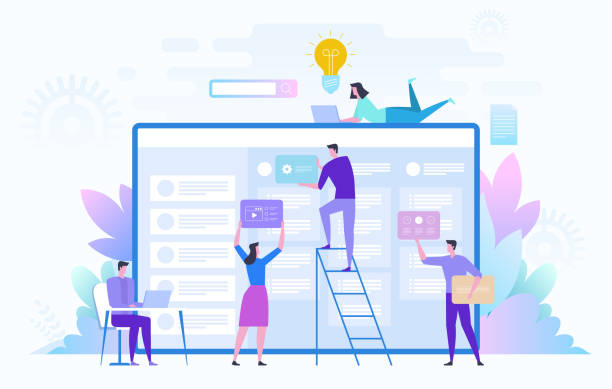
One of the often-overlooked aspects of multilingual website design is User Experience (UX).
Simply translating text and enabling a language switcher does not mean providing a good UX.
A successful multilingual website should convey a sense of integration and localization to users in every language and geographical region.
This includes visual design, element layout, navigation, and even the choice of images and colors, all of which must align with the target audience’s culture.
The language switcher should be easy to find and use.
It is usually placed in the top right or bottom corner of the page, and instead of country flags (which might cause sensitivities), language names (e.g., English, Deutsch, فارسی) should be used.
The website should automatically detect the user’s language based on their browser settings or IP and display the appropriate version, but it should always give the user the option to change the language.
This is an explanatory feature that gives the user freedom of action.
Furthermore, the design must be compatible with the writing direction of the languages.
For languages like Persian and Arabic, which are written from right-to-left (RTL), the website layout must be completely reversed so that elements are positioned from right to left.
This not only includes text but also navigation bars, images, forms, and buttons.
This type of design requires specialized precision.
Fonts must also be suitable and legible for each language.
Ensuring that fonts are displayed correctly across all devices and browsers is crucial.
Finally, engaging and culturally relevant content can significantly enhance the user experience.
Humor, examples, and even the images used should be understandable and appealing to the local audience.
Customer support should also be provided in multiple languages; a contact form or live chat in the user’s native language can significantly increase customer satisfaction.
By considering these details, your multilingual website design will not only be efficient but also remain pleasant and user-friendly for users.
7. Suitable Tools and Platforms for Multilingual Website Design
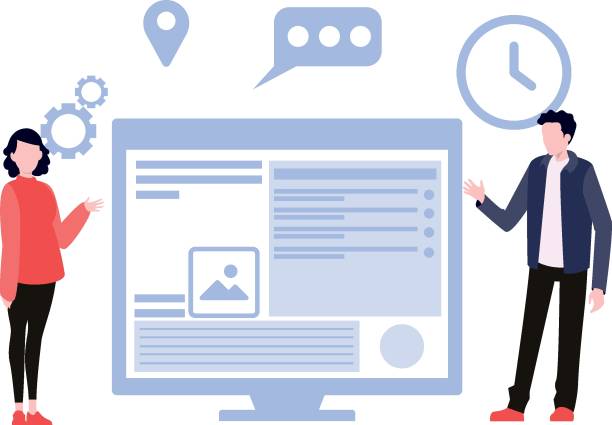
Choosing the right tools and platforms is a crucial step in the multilingual website design process.
Fortunately, today there are various options that can facilitate this process.
From Content Management Systems (CMS) to translation plugins and Translation Management Systems (TMS), each plays an important role in creating and maintaining an efficient multilingual website.
The right choice depends on your specific needs, budget, and team resources.
This is a news and specialized section where staying up-to-date is important.
Some of the most popular CMSs offer built-in or plugin support for multilingualism.
WordPress, with plugins like WPML or Polylang, is one of the most common options for multilingual sites.
Drupal and Joomla are also designed from the ground up to support multilingualism and are considered powerful options.
CMS selection should be made considering content complexity, technical requirements, and future scalability.
Table 2: Popular Platforms for Multilingual Website Design
| Platform | Advantages for Multilingualism | Potential Disadvantages | Suitable For |
|---|---|---|---|
| WordPress | Powerful plugins (WPML, Polylang), large user community, easy to use | Some plugins might be heavy, plugin dependency | Blogs, small to medium corporate sites, online stores |
| Drupal | Strong native multilingual support, high scalability, high security | More complex for beginners, requires technical knowledge | Government sites, large organizations, complex portals |
| Joomla | Built-in multilingual support, user-friendly interface, flexibility | Smaller user community than WordPress, requires plugins for some features | Corporate sites, online stores, social portals |
| Webflow | Powerful visual design tools, multilingual support, no coding required | High cost for large projects, limitations in very deep customization | Web designers, startups, corporate sites with specific design needs |
In addition to CMSs, Translation Management Systems (TMS) can also assist in the content translation and localization process.
These platforms automate the translation workflow, manage Translation Memories and Terminology Bases, which helps maintain consistency and reduce translation costs.
Tools like Transifex, Phrase, or Smartling are examples of these systems.
For large websites with a high volume of content and a need for continuous updates, using a TMS can significantly increase team efficiency and ultimately lead to a successful multilingual website design.
8. Maintenance and Updates of Multilingual Content
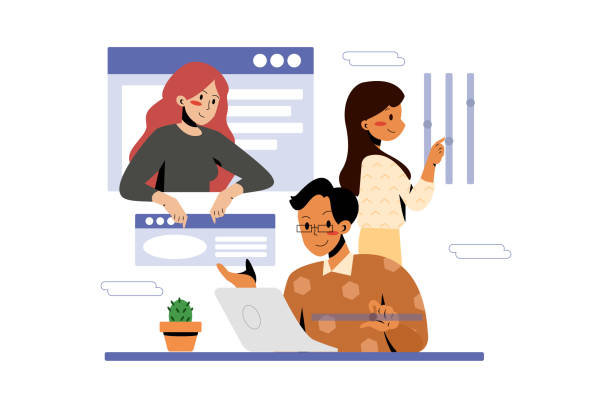
Multilingual website design is only the first step.
Continuous maintenance and updates of content across all languages are equally, if not more, important.
A website with outdated or inconsistent content not only provides a poor user experience but also harms brand credibility.
This process requires a clear strategy, sufficient resources, and appropriate tools to ensure that all language versions of your website are always accurate, up-to-date, and consistent.
This section is a comprehensive guide to maintaining your site’s quality.
One of the main challenges is keeping content consistent across all languages.
Whenever your website’s main content (e.g., a new product page, a blog article, or a feature update) changes, you must ensure that the translated versions are also updated promptly.
This can be facilitated by using Translation Management Systems (TMS) that track changes and notify translators.
Creating a shared content calendar for all languages can also help with planning and coordination.
Periodic content review by native translators or professional reviewers is also crucial.
Languages are living, and idioms and phrases may change over time.
Additionally, feedback from local users can provide valuable insights into improving translation quality and content localization.
This analytical and feedback-driven process ensures that your site always aligns with the needs and expectations of its target audience.
In addition to textual content, updating images, videos, and other multimedia elements is also essential.
These elements must be culturally appropriate and convey the correct message in each language.
For example, an image that has a positive meaning in one culture might cause misunderstanding in another.
Maintaining a multilingual website is an ongoing commitment that requires attention to detail, strategic planning, and optimal use of technology to effectively serve your global audience and turn your multilingual website design into a valuable asset.
Does your current website build the trust that potential customers should have in your business? If the answer is no, it’s time to get a professional and impactful corporate website with Rasaweb.
✅ Fully customized design tailored to your brand identity
✅ Increased lead generation and business credibility in the eyes of customers⚡ Contact us for a free consultation!
9. Measuring Success and Analyzing Performance of a Multilingual Website
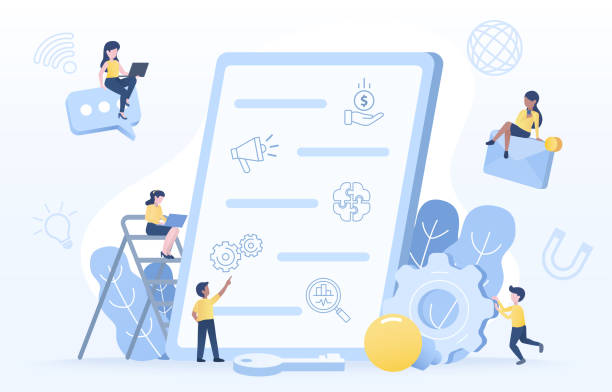
After designing and launching your multilingual website, the next crucial step is measuring its success and analyzing its performance.
Without precise data and metrics, you cannot determine whether your investment in this area has been fruitful or where optimization is needed.
Web analytics tools like Google Analytics and Google Search Console provide valuable data that can help you understand user behavior in each language version.
This is an analytical and data-driven approach.
Important metrics to monitor include:
- Website traffic by language and geographical region: Which languages and countries attract the most visitors to your site? Has traffic from your target regions increased?
- Bounce Rate by language: Do users leave the site faster in specific language versions? This could indicate poor translation quality, an unsuitable user experience, or content that doesn’t meet expectations.
This is a questionable content that requires careful examination. - Conversion Rate by language: Are users in different languages effectively converting into customers? This is the ultimate measure of success for many businesses.
- Keyword rankings in search engines for each language: Is your site ranking well for target keywords in each language?
- User dwell time on pages: How much time do users spend on different language versions? Longer durations indicate better engagement.
Additionally, reviewing Google Search Console reports for each language version can help identify crawl errors, indexing issues, and the keywords your site is visible for.
User surveys, direct feedback collection, and conducting usability testing with native speakers can also provide deep insights into user experience and potential weaknesses.
This information helps you make informed decisions for continuous optimization of your multilingual website design and maximize your investment.
10. The Future of Multilingual Website Design and Emerging Trends
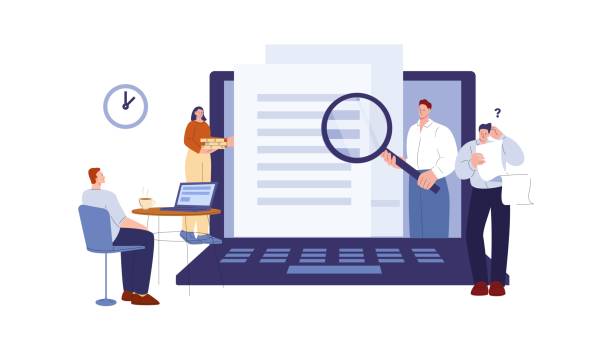
Multilingual website design, like many aspects of the digital world, is continuously evolving.
Emerging trends in technology and user behavior are shaping the future of this field and providing new opportunities for businesses looking to expand globally.
Understanding these trends is crucial for maintaining competitiveness and preparing for the future.
This is a news and specialized discussion that explores the horizons ahead.
One of the most important future trends is the advancement of Artificial Intelligence (AI) in translation.
Although pure machine translation still has shortcomings, its quality is significantly improving with advancements in algorithms and deep learning.
This could mean faster, cheaper, and more accurate content translation in the future, which will greatly simplify the maintenance process for multilingual websites.
It is expected that AI tools will be able to automatically localize not only text but also images and videos.
This implies a major transformation in the way multilingual website design is approached.
Voice search and voice assistants are also playing an increasing role in how users interact with websites.
Optimizing content for voice search in different languages is a new challenge for multilingual SEO.
Users tend to speak to voice assistants in their natural language, so your content should be designed to answer these types of queries.
This includes using conversational language and direct answers to common questions.
Virtual Reality (VR) and Augmented Reality (AR) technologies also have the potential to change how content is presented in different languages.
Imagine an online store that allows users to experience products in a VR environment and hear product descriptions in their own language.
These types of multilingual experiences can be very engaging and attractive.
Ultimately, focusing on localization beyond translation, meaning a deeper understanding of cultural differences and providing fully personalized experiences for each market, will be the cornerstone of multilingual website design in the future.
This approach enables businesses to stay ahead in global competition.
Frequently Asked Questions
| Question | Answer |
|---|---|
| 1. What is multilingual website design? | The process of creating a website whose content is available in multiple different languages so that users from all over the world can interact with the site in their own language. |
| 2. Why should we make our site multilingual? | To expand market reach, attract international audiences, improve SEO in global search results, and enhance brand credibility and professionalism. |
| 3. What are the methods for implementing a multilingual site? | Using subdomains (e.g., fa.example.com), subdirectories (e.g., example.com/fa/), URL parameters (e.g., example.com?lang=fa), or country-specific domains (e.g., .ir, .de). |
| 4. Is multilingual website SEO different? | Yes, it requires international SEO strategies such as using the hreflang tag, appropriate URL structure for each language, and keyword research for each language. |
| 5. What points should be considered when choosing languages? | Language selection should be based on the target market, audience demographics, and current website traffic analysis data. |
| 6. What are common problems in multilingual website design? | Issues related to SEO, translation quality, content management, right-to-left (RTL) and left-to-right (LTR) support, and user experience. |
| 7. What is the role of CMS in multilingual sites? | Modern Content Management Systems (CMS) (such as WordPress with multilingual plugins or Drupal) offer built-in features or powerful plugins for easy content management in multiple languages. |
| 8. How should content translation be done? | Translation should be done by native and professional translators, not just machine translation, to ensure local tone, culture, and idioms are observed. |
| 9. How is language switching done on multilingual sites? | Typically, a Language Switcher is used in the header or footer of the site, allowing users to easily select their desired language. |
| 10. Is responsive design important for a multilingual site? | Yes, responsive design ensures that the site is displayed correctly on any device (mobile, tablet, desktop), which is crucial for international user access and SEO. |
And other services of Rasaweb Advertising Agency in the field of digital advertising:
Smart Branding: A fast and efficient solution for increasing website traffic with a focus on attractive UI design.
Smart Content Strategy: Revolutionize SEO ranking with the help of intelligent data analysis.
Smart Direct Marketing: Transform click-through rates with the help of attractive UI design.
Smart Brand Identity: A novel service for increasing website traffic through custom programming.
Smart Custom Software: A dedicated service for increasing sales growth based on optimizing key pages.
And over a hundred other services in the field of internet advertising, advertising consultation, and organizational solutions.
Internet Advertising | Advertising Strategy | Sponsored Content
Sources
Multilingual Website Design for Business DevelopmentComprehensive Guide to Multilingual SEOHow to Build a Multilingual WebsiteGlobal Business Expansion Strategies
? Are you ready to transform your business in the digital world? Rasaweb Afarin Digital Marketing Agency, by providing professional services including WordPress website design and SEO optimization, paves the way for your online success. Build a bright future for your brand with us.
📍 Tehran, Mirdamad Street, next to Bank Markazi, Southern Kazeroon Alley, Ramin Alley, No. 6

